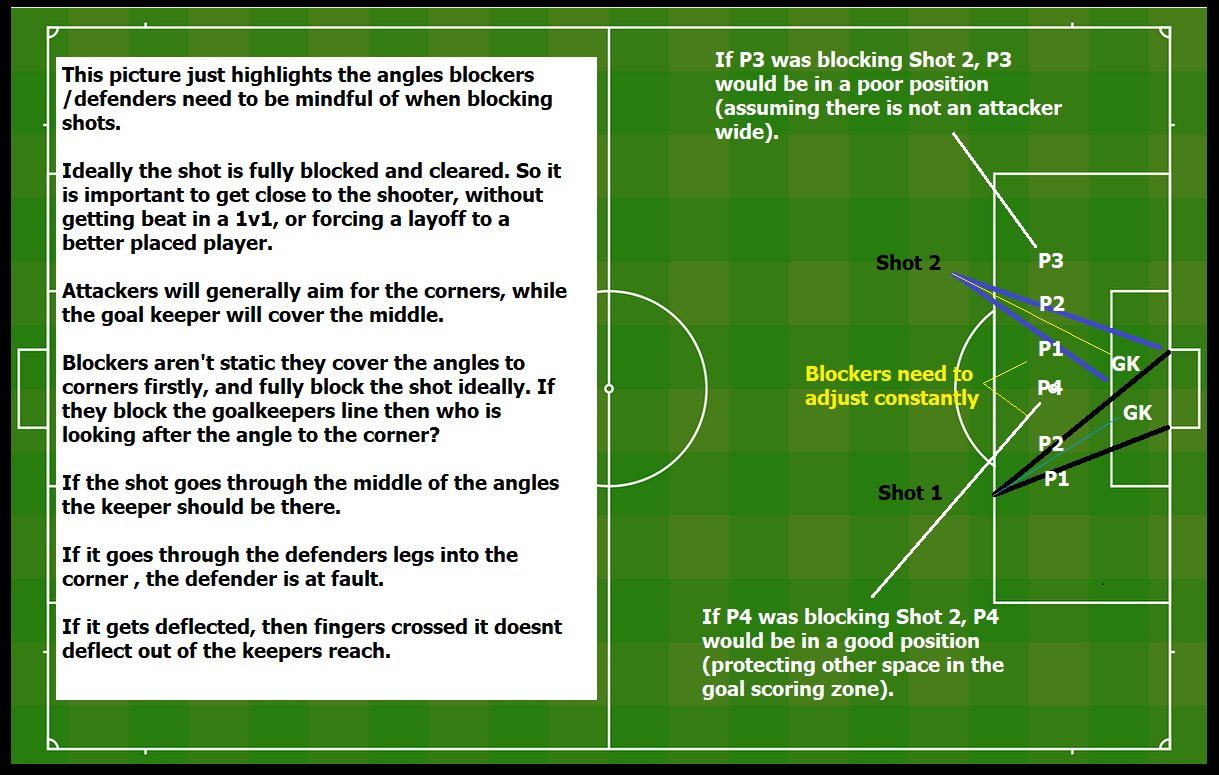Shot Block
The term ' shot block' describes the structure required, and the actions of players , when there is a threat that the ball might be hit at goal when in the 'key goal scoring area' (the hot spot) and what to do if it is.
Shot blocking starts with the following fundamental defending objective :
The #1 Objective of Defending is :
Stopping the opposition from scoring.
'Man-marking', 'tackling', 'winning the ball' etc (although these are all a very important part of defending) they are not the main objective.
For this reason :
The hot spot area needs to be heavily defended.
Shot Block Principles
Shot blocking means :
- Keeping the area in front of the goal as congested as possible so that any attempt on goal is either blocked, misses or goes to the keeper.
- Note : Trying to get the 'defensive triangle' set up (see video below) is a minimum requirement.
- Close down players 'on the ball' in scoring positions, and deny them time and space, and generally make it really hard for the attackers to get easy shots at goal.
- Goal keepers saving shots are also part of the shot block process - Players can cut of parts of the goal, while the goalkeeper takes the rest.
- So it isn't that shots won't occur or aren't allowed, it's just that if a shot does occur, then the goalkeeper should have a good chance of saving it.
Task #1
Study the video below to assess how well Aston Villa followed the 'shot block' principles.
When did they do it well, and when did they get it wrong?
Note :
- Sometimes letting a cross come into the box, is a better option than trying to win the ball out wide.
- It is very tempting for defenders to get dragged towards the ball, or get taken out of the 'hot spot' by clever forward movement, but if the ball does find its way into the box, and forwards / midfielders in the box, and have lots of time and space if the ball does find them, then they are in a great position from which to score.
- Conversely if the defensive shape in the 'hot spot' area is good, it may be better if the ball does come into the box and if the defenders are ready to react and are able to put pressure on the ball, then the likelihood of the opposition scoring is low.
The next picture is of a possible set up for a corner.
Although this is not a page on defending corners, a corner set up can be used as a base for all scenarios when there is a chance the ball may be hit into the box.
Read the notes regarding the changes that are required for crosses (compared to corners).

